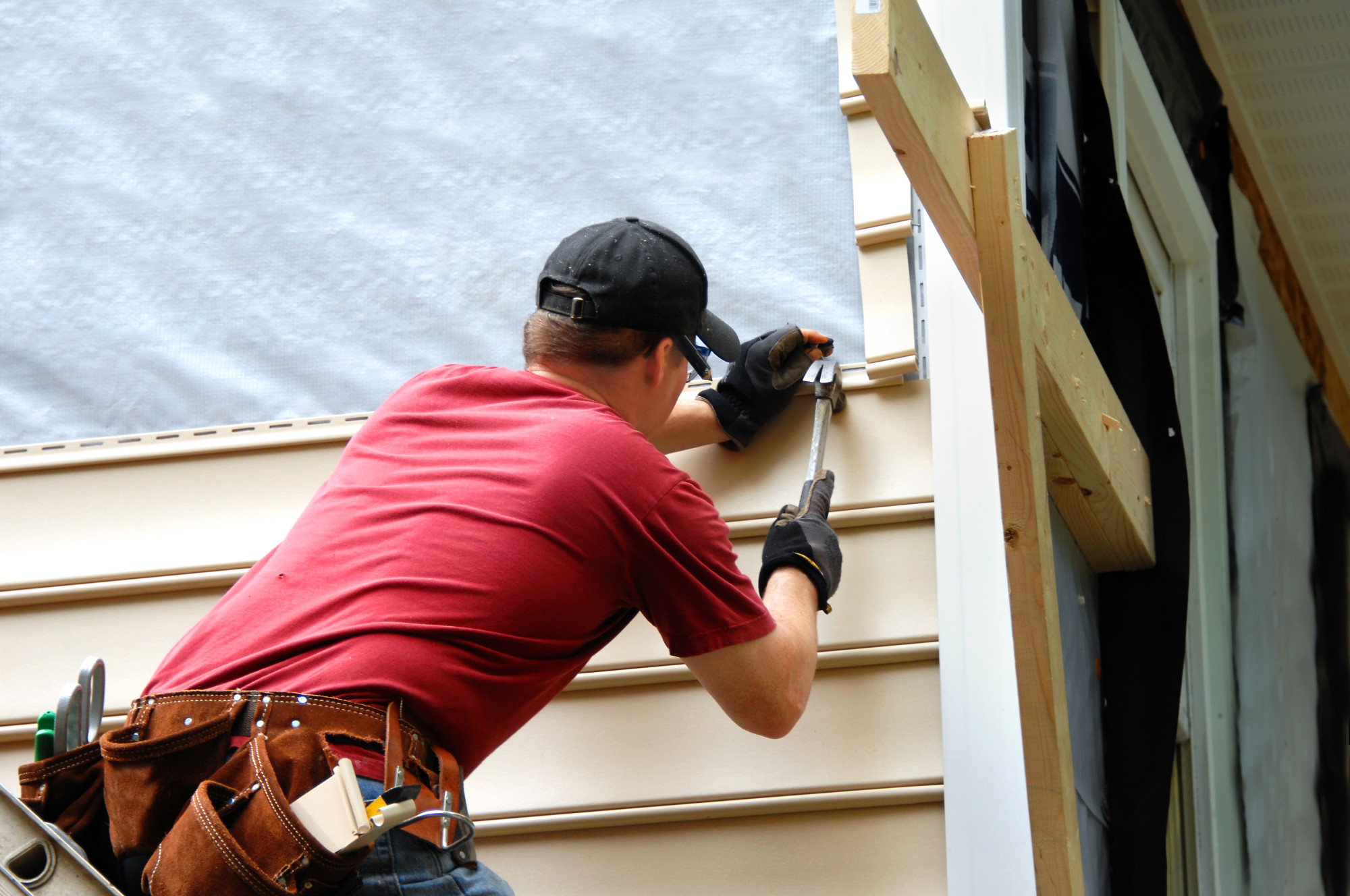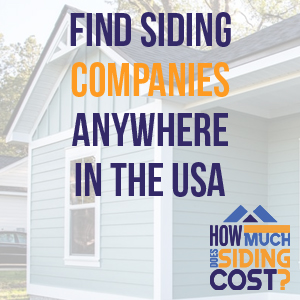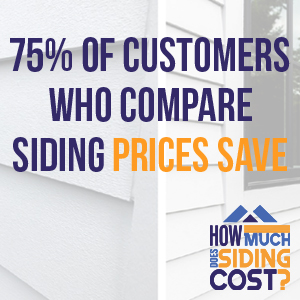
Top 10 Siding Problems and How to Avoid Them
Siding is a crucial element of a home’s exterior, offering protection against the elements and enhancing the overall aesthetic appeal. However, like any other component of a home, siding is susceptible to various problems over time. Understanding these issues and how to prevent them can save homeowners considerable time, effort, and money. In this blog, we’ll delve into the top 10 siding problems and offer solutions on how to circumvent them.
Warping and Buckling
Warping and buckling is a common problem for many types of siding, especially vinyl.
How to Avoid:
Ensure proper installation with adequate spacing to account for expansion and contraction. Regularly inspect the siding to catch any warping early and address it before it worsens.
Moisture Damage
Moisture trapped behind the siding can lead to mold growth and structural damage.
How to Avoid:
Invest in a proper moisture barrier or house wrap. Ensure that your siding is installed correctly, with weep holes or channels that allow moisture to escape.
Fading
Over time, the sun’s UV rays can cause siding colors to fade.
How to Avoid:
Opt for siding materials with UV-resistant coatings or treatments. Consider applying a UV-protective sealant to existing siding.

Insect Damage
Certain sidings, especially wood, can be prone to insect infestation, like termites or carpenter ants.
How to Avoid:
Regularly treat wood siding with insect repellents or pesticides. Inspect your siding annually for any signs of insect damage or nests.
Cracking or Holes
Physical damage can occur due to harsh weather conditions or accidents.
How to Avoid:
Choose durable siding materials suited to your local climate. Address any damage immediately to prevent further issues.
Loose Siding
Panels may detach from the home, especially after storms or due to improper installation.
How to Avoid:
Regularly inspect your siding and ensure each panel is securely attached. If you spot any loose pieces, reattach or replace them promptly.
Rot
Wood siding, in particular, is susceptible to rot when exposed to prolonged moisture.
How to Avoid:
Ensure good water runoff by maintaining gutters and downspouts. Regularly inspect for early signs of rot and replace affected panels. Consider using treated wood or alternative materials that resist rot.
Poor Energy Efficiency
Inadequate or aging siding may not provide sufficient insulation, leading to increased energy bills.
How to Avoid:
Consider adding a layer of insulative material under the siding. If replacing siding, opt for materials known for their insulating properties.
Growth of Algae or Mold
In damp conditions, siding can become a breeding ground for algae, mold, or mildew.
How to Avoid:
Regularly clean your siding, especially in shaded or damp areas. Consider using siding materials treated to resist mold and algae growth.

Difficulty in Replacement or Matching
Over time, it may become challenging to find matching panels for repair or replacement.
How to Avoid:
Keep any leftover panels from the initial installation. If matching panels are unavailable, consider painting or staining the siding to achieve a uniform look.
While siding problems are not uncommon, many of them can be avoided with regular maintenance and timely interventions. By understanding these common issues and their preventative measures, homeowners can ensure their siding remains in good condition for years, protecting their homes and enhancing curb appeal.
Best Ways to Protect Your Siding and Increase Its Lifespan
Siding is an integral component of a home’s exterior, not only for its aesthetic role but also for its protective function against environmental factors. To ensure you get the most out of your investment, it’s essential to know the best practices for siding protection. In addition, understanding the average lifespan of various siding materials can aid in planning maintenance or replacements. Here, we’ll discuss both.
Protecting Your Siding: Top Tips
- Regular Cleaning: Dirt, mildew, and algae can deteriorate your siding over time. A gentle cleaning once or twice a year using a soft brush and a mixture of water and mild detergent can keep it looking new and free of harmful growths.
- Prompt Repairs: If you notice any cracks, chips, or damages, address them immediately. Leaving even minor damages unattended can lead to more significant issues in the future.
- Seal and Paint: If you have wood siding, consider sealing, painting, or staining it every few years to protect against moisture and UV rays. This can enhance its durability and appearance.
- Install Properly: Proper installation is critical. Ensure that your siding is installed with the correct spacing, fastening, and alignment to prevent warping, bulging, or other issues.
- Avoid Direct Sprinklers: If you have sprinklers, ensure they’re not hitting the siding directly. Continuous water exposure can lead to rot, especially in wood siding, and can weaken other types.
- Inspect Regularly: At least once a year, do a thorough inspection of your siding. Check for signs of damage, discoloration, or other potential issues.
Average Lifespan of Siding Materials:
- Vinyl Siding: It’s one of the most popular siding materials due to its cost-effectiveness and low maintenance needs. On average, vinyl siding lasts between 20 to 40 years.
- Wood Siding: Depending on the type of wood, regular maintenance, and environmental conditions, wood siding can last anywhere from 20 to 100 years. Cedar, for instance, is known for its longevity.
- Metal Siding (Aluminum or Steel): Metal sidings can last between 40 to 50 years, but they may require repainting to deal with chalking or fading.
- Fiber Cement Siding: With proper care, fiber cement siding can last over 50 years, making it one of the more durable options available.
- Brick and Stone Siding: Brick and stone are premium siding choices known for their durability and aesthetics. They can last over 100 years, with some brick sidings even outlasting the building they’re on!
- Stucco: Depending on the climate and its application, stucco can last from 50 to 80 years.
The lifespan of siding largely depends on the material used and the care it receives over the years. By taking proactive steps to maintain and protect your siding, you can ensure that it serves its purpose for many years, keeping your home beautiful and protected from the elements.

The Best Siding Materials in 2023
As the years roll on, advances in technology and design continually influence the construction and home renovation industry. In 2023, homeowners have access to an array of siding materials that not only offer enhanced protection and durability but also cater to the ever-evolving aesthetic preferences of the modern homeowner. Here’s a look at the top siding materials that have been dominating the market this year:
1. Composite Siding
Composite siding, a blend of various materials like wood, binders, and resins, has seen a surge in popularity. This material replicates the appearance of natural wood but offers superior resistance to rot and insects. Its low-maintenance nature and extensive range of designs and colors make it a favorite among homeowners.
2. Engineered Wood Siding
Engineered wood offers the authentic appearance of wood without the susceptibility to moisture or pests. Made from wood fibers combined with a resin binder, it’s designed to be durable, lightweight, and environmentally friendly.
3. Fiber Cement Siding
A consistent favorite over the years, fiber cement siding continues its reign in 2023. Known for its versatility in mimicking various materials, from wood to stucco, it’s fire-resistant, termite-proof, and can withstand severe weather conditions.
4. Vinyl Siding with Improved Insulation
While vinyl siding has been a staple for years, the 2023 market sees a version with enhanced insulation. These new variants offer better energy efficiency, ensuring homes stay warmer in the winter and cooler in the summer.

5. Metal Siding (Corten Steel and Zinc)
Beyond the conventional aluminum or steel, homeowners are now gravitating towards other metals like Corten steel and zinc. These materials age gracefully, developing a unique patina over time, offering homes a blend of modernity and rustic charm.
6. Solar Siding
Sustainability remains a key theme in 2023. Solar sidings incorporate photovoltaic cells, allowing homeowners to harness solar energy while ensuring their homes look sleek and contemporary.
7. Brick Veneer
While traditional brick has its charm, brick veneer offers the aesthetic appeal of brick without the bulk and weight. It’s easier to install and provides excellent insulation, making it a top choice for homeowners looking for a classic appearance with modern benefits.
8. Stone Veneer
Similar to brick veneer, stone veneer sidings offer the grandeur and elegance of real stone without the hefty price tag. They are lightweight, making installation more straightforward, and come in a plethora of designs and hues.
9. Smart Siding
Technology has infiltrated every aspect of our lives, including our home sidings. Smart siding options in 2023 offer features such as self-cleaning capabilities or the ability to change colors based on homeowners’ preferences or specific events.
10. Recycled Material Siding
In line with global pushes towards sustainability, recycled material sidings are becoming a popular choice. Made from post-consumer waste, these sidings are not only eco-friendly but also durable and come in various attractive designs.
Choosing the right siding material in 2023 is about balancing aesthetics, functionality, and environmental impact. With the array of innovative and high-quality options available, homeowners can find the perfect siding that suits their style and needs, ensuring their homes remain protected and beautiful for years to come.

Cost Analysis: Siding Materials and Their Financial Implications
When selecting siding for a home, the initial cost is just one factor in the decision-making process. Homeowners also need to consider long-term costs associated with durability, maintenance, and potential energy savings. This comprehensive cost analysis aims to provide clarity on the financial implications of various siding choices.
1. Vinyl Siding:
Initial Cost: Among the most affordable options, the average cost per square foot can range from $2 to $7, depending on quality and design.
Long-term Costs: Vinyl is relatively low-maintenance, but it may need replacement after 20-40 years. While it offers some insulation, higher-end insulated vinyl can provide more energy savings, albeit at a higher initial price.
2. Wood Siding:
Initial Cost: Prices fluctuate based on the type of wood, but on average, it can range from $5 to $14 per square foot.
Long-term Costs: Wood requires regular maintenance, including sealing, painting, or staining to prevent decay and pest infestations. Over time, this can add up. However, wood provides decent natural insulation.
3. Fiber Cement Siding:
Initial Cost: Typically, homeowners can expect to pay between $6 to $13 per square foot.
Long-term Costs: This material is known for its durability and resistance to pests, rot, and fire. Maintenance is minimal, but the potential energy savings are moderate compared to some other options.
4. Metal Siding (Aluminum, Steel, Corten Steel, Zinc):
Initial Cost: Costs vary with the type of metal and finish, ranging from $3 to $15 per square foot.
Long-term Costs: Metal sidings can last up to 50 years or more. They might require repainting due to chalking or fading. They don’t offer significant insulation, so energy savings are modest unless combined with robust insulation.

5. Brick and Stone Veneer:
Initial Cost: These are among the pricier options, costing anywhere from $9 to $28 per square foot.
Long-term Costs: Both materials are incredibly durable and can last over a century. They need minimal maintenance and provide good insulation, leading to more energy savings.
6. Composite Siding:
Initial Cost: This material generally falls between $5 to $10 per square foot.
Long-term Costs: With a lifespan of around 20-30 years, composite requires little maintenance. It offers decent insulation, making it a cost-effective option over time.
7. Engineered Wood Siding:
Initial Cost: Homeowners can expect a range of $3 to $9 per square foot.
Long-term Costs: Engineered wood has better resistance to rot and pests than traditional wood. Maintenance is moderate, and it offers good insulating properties, aiding in energy savings.
8. Solar Siding:
Initial Cost: Being a novel technology, the cost is on the higher end, often exceeding $20 per square foot, depending on the photovoltaic technology used.
Long-term Costs: Maintenance is relatively low, and the primary benefit comes from significant energy savings, as these sidings actively generate electricity. Over time, homeowners might even recoup their initial investment through energy savings and potential energy buy-back programs.
9. Stucco:
Initial Cost: On average, stucco costs between $6 to $9 per square foot.
Long-term Costs: With a lifespan of 50-80 years and low maintenance requirements, stucco is cost-effective over its lifetime. Its insulating properties can also lead to moderate energy savings.
10. Recycled Material Siding:
Initial Cost: Prices are variable, ranging from $5 to $15 per square foot based on the materials used.
Long-term Costs: Typically low-maintenance and durable, these eco-friendly options also contribute to potential tax savings or incentives based on regional green initiatives.
While the initial investment plays a significant role in siding decisions, it’s essential to factor in the long-term costs. Some materials may have a higher upfront cost but can prove more economical over time due to durability, minimal maintenance, and energy savings. Choosing the right siding isn’t just about aesthetics; it’s an investment in the home’s future.

Color and Design Trends: Siding Aesthetics in 2023
As much as siding serves functional purposes, it’s equally influential in determining a home’s visual appeal. 2023 has ushered in some exciting trends in siding colors and designs, with homeowners globally seeking fresh and modern exteriors that harmonize with nature, exude minimalism, or make bold statements. Let’s delve into what’s hot in the siding world this year.
Earth Tones Take the Lead
Following the global emphasis on sustainability and a closer connection to nature, earthy tones have surged in popularity. Variants of greens, browns, and tans, often in matte finishes, have been flying off the shelves. These natural hues are versatile and effortlessly blend into most environments, bringing a serene, grounded ambiance to homes.
The Rise of Monochromatic Themes
Monochromatic color schemes, especially in shades of gray or off-white, are making waves. Homeowners are gravitating towards this style for its timeless elegance. Different textures and materials are used to break the monotony and add depth and interest.
Bold is Gold
For those looking to make a striking impression, bold, contrasting colors are in. Think dark navy blues, profound charcoals, or rich burgundies paired with bright trims for a sharp, contemporary look. These deep, bold colors can give homes a luxurious and commanding presence.
Patterns and Mixed Materials
The idea of blending different siding materials or patterns on a single facade is increasingly catching on. It’s not unusual to see homes with a mix of brick veneer, wood, and metal or those combining horizontal and vertical siding patterns. This trend is all about creating unique, customized exteriors that stand out.
Textural Intrigue
Homeowners are exploring various textures to infuse character into their homes. Whether it’s the rustic allure of hand-cut stone veneer, the sleekness of smooth metal, or the rough, tactile charm of cedar shakes, texture is a significant player in 2023’s siding trends.
Matte Over Gloss
The matte finish is king this year. It offers a sophisticated, modern look, and its non-reflective nature means homes blend more harmoniously into their surroundings. Whether on metal, vinyl, or wood, the matte finish provides a soft, contemporary touch.
Return to Tradition
While many are embracing modern aesthetics, there’s also a revival of traditional siding styles. Classic lap siding, board and batten, and shingles in conventional colors like reds, blues, and whites are making a comeback, especially in neighborhoods with a historical character.

Sustainability in Design
Eco-conscious homeowners are keen on sidings that don’t just look good but are also environmentally friendly. Recycled material siding, as previously mentioned, is seeing increased adoption. These sidings often come in organic hues, further emphasizing the connection to nature.
Customization is Key
Lastly, with advanced manufacturing techniques, it’s become easier for homeowners to customize their siding colors and designs, ensuring their homes reflect their personalities to the tee.
Insulation and Energy Efficiency: The Role of Siding in Your Home’s Energy Footprint
The exterior of a home serves as its primary defense against the elements, and siding plays a crucial role in not just protecting the home, but also in its overall energy efficiency. The right siding can act as a thermal barrier, reducing the amount of heat or cold that enters the home, leading to decreased reliance on HVAC systems and, consequently, lowered energy bills. Let’s delve into how different sidings impact a home’s energy efficiency and their associated benefits.
Vinyl Siding:
Vinyl siding alone offers basic protection against external temperatures. However, insulated vinyl siding, which comes with added foam insulation, significantly increases a home’s energy efficiency. This foam fills gaps between the siding and the home’s exterior walls, reducing drafts and providing a consistent insulation layer.
Wood Siding:
Wood naturally possesses good insulating properties. Its cellular structure creates air pockets that resist the flow of heat, providing a moderate level of insulation. However, for optimal efficiency, wood siding requires proper sealing and regular maintenance to prevent cracks and gaps that can compromise its insulating properties.
Fiber Cement Siding:
On its own, fiber cement siding doesn’t offer significant insulation. However, when installed with a layer of rigid foam insulation beneath it, its energy efficiency properties can rival that of insulated vinyl, providing a substantial barrier against heat and cold.
Metal Siding:
Metal is a conductor of heat, meaning without proper insulation, metal siding can make homes hotter in summer and colder in winter. However, modern metal sidings are often installed with a thermal backing or are combined with insulation materials, transforming them into energy-efficient options.
Brick and Stone Veneer:
Brick and stone have high thermal mass, meaning they can absorb, store, and slowly release heat. This characteristic helps regulate indoor temperatures, especially during temperature fluctuations. However, for maximum energy efficiency, there should be an insulating layer between the brick or stone veneer and the home’s structural walls.

Composite Siding:
Composite sidings, often made from a mix of wood fibers, plastic, and binders, generally offer better insulation than standard vinyl siding. Its composition lends itself to good thermal resistance, helping to keep homes comfortable in various climates.
Engineered Wood Siding:
Engineered wood, made from wood strands combined with adhesive resins, typically provides better insulation than traditional wood. Its manufacturing process results in a dense product that resists heat transfer effectively.
Solar Siding:
Solar siding is equipped with photovoltaic cells that capture sunlight and convert it into electricity. While its primary benefit is electricity generation, the built-in solar panels can also act as an additional insulating layer, reducing heat penetration during summer months.
Stucco:
Stucco, being porous, has the natural ability to “breathe.” This means it can release moisture and reduce the chances of trapped moisture, which can degrade insulation properties. Its thickness also offers a decent insulating value, making it a good choice for energy efficiency in certain climates.
The Added Benefit of Siding-Driven Insulation:
Beyond consistent indoor temperatures and reduced energy bills, proper siding-driven insulation also reduces the strain on HVAC systems, potentially extending their lifespan. Furthermore, homes with superior energy efficiency often fetch higher market values, making the investment in good siding doubly beneficial.
While the aesthetic appeal of siding is undeniably important, its role in a home’s energy efficiency is paramount. By understanding the insulating properties of various siding materials and ensuring proper installation, homeowners can enjoy both a beautiful exterior and a wallet-friendly energy bill.

Regional Considerations: Tailoring Your Siding to Your Climate
The region you reside in plays a significant role in determining the ideal siding for your home. Coastal winds, desert sun, or freezing mountain temperatures all require different attributes from siding materials. Ensuring your siding is suitable for your local climate can greatly enhance its lifespan, appearance, and overall performance. Here’s a look at how various climates influence siding choices:
Coastal Areas:
Homes near the sea face salty air, high humidity, and sometimes strong winds. These conditions can wreak havoc on certain siding materials.
- Best Choices: Vinyl, composite siding, or fiber cement are often preferred for coastal homes due to their resistance to salt corrosion and moisture.
- To Avoid: Metal (unless it’s specifically treated for salt resistance) can corrode quickly, and wood can warp or rot unless consistently maintained.
Sunny and Hot Climates:
In areas that receive intense sunlight and heat, siding must withstand UV radiation without fading while also offering insulation against the heat.
- Best Choices: Fiber cement is excellent for sunny areas because it doesn’t warp or fade easily. Stucco, being reflective, can also deflect sunlight and keep homes cooler. Solar siding is another apt choice for such regions, converting sunlight to energy.
- To Avoid: Dark-colored sidings, regardless of material, as they can absorb heat and make homes warmer.
Cold Climates:
For homes in chilly regions, the siding should offer maximum insulation and be durable enough to withstand snow, hail, and freezing temperatures.
- Best Choices: Insulated vinyl, composite siding, and brick veneer are among the top choices for cold climates. These materials provide substantial insulation and can withstand the wear and tear of harsh winter conditions.
- To Avoid: Thin metal siding without insulation, as it can conduct cold into the home.
High Rainfall or Humid Regions:
Areas prone to rainfall or high humidity require siding that can resist water infiltration and prevent mold and rot.
- Best Choices: Fiber cement and vinyl are non-porous, making them resistant to water damage. Brick veneer, due to its high thermal mass, can also be suitable as it dries out slowly, preventing internal condensation.
- To Avoid: Wood, unless it’s properly sealed and maintained, as it can rot or warp in consistently wet conditions.

Windy Areas:
For homes in regions with strong winds, especially those susceptible to hurricanes or tornadoes, the siding must be securely anchored and durable.
- Best Choices: Brick, stone veneer, and fiber cement are heavy-duty materials that can withstand strong winds when properly installed.
- To Avoid: Lighter materials like vinyl or aluminum might get damaged or torn off if not adequately reinforced.
Mountainous or Forested Areas:
Homes in these areas face potential threats from wildfires, so the siding should be fire-resistant.
- Best Choices: Brick, stone, stucco, and fiber cement are all non-combustible materials, making them ideal choices for such regions.
- To Avoid: Wood or any wood-based products, unless they’re specially treated for fire resistance.
Your geographical location and its accompanying climatic conditions greatly influence the best siding choices for your home. It’s crucial to consider these factors and consult with local experts or contractors to ensure your home is both protected and aesthetically appealing, irrespective of what Mother Nature throws its way.
